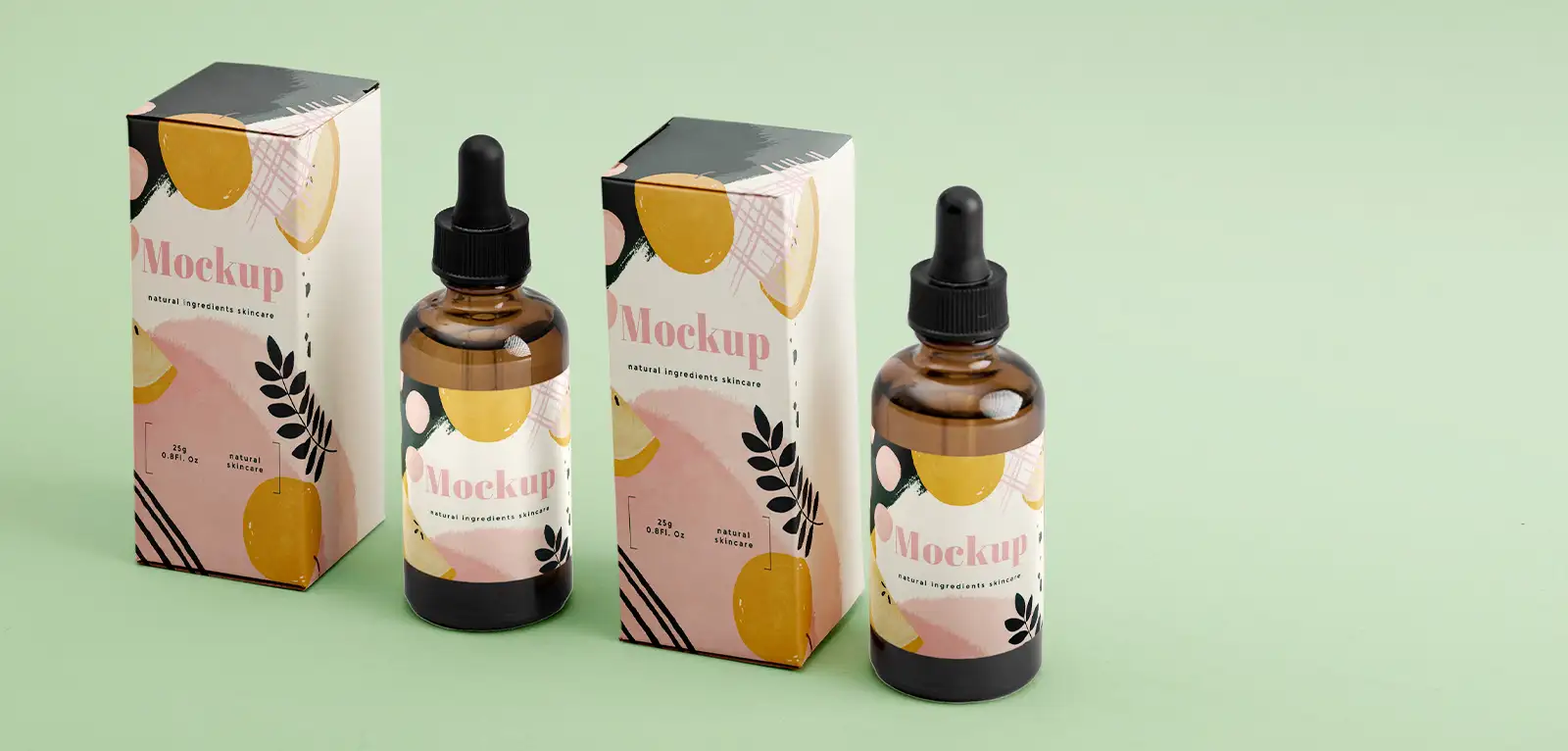March 13, 2025
Marketing Ideas for Small Business Growth: What You Need & When


As your business grows, so should your marketing strategy. What worked when you were just starting out might not be enough as you expand and face more competition. Each phase of business development – from being a micro startup to becoming a leader in your field – demands different tools and approaches to attract customers and grow your brand.
In this guide, we’ll break down the marketing assets you need at each stage of your growth, from foundational tools like business cards and stickers to advanced strategies like pay-per-click advertising and branded merchandise. Whether you’re in the early stages or scaling fast, you’ll find practical marketing ideas for small business at every level.
As a solopreneur, freelancer, or side hustler on a tight budget, your marketing needs are still a top priority. Building recognition and credibility is crucial for attracting and keeping customers. To do this, you need affordable tools that promote your brand and show off your expertise. By investing in the marketing essentials first, you’ll build a solid foundation for your business, making it easier to attract and keep customers and drive growth.
Your logo is a crucial part of your brand’s visual identity, affecting how people see your business. You need a design that’s not just nice to look at, but also versatile, easy to remember, and true to your brand’s personality. A great logo works across different platforms, from business cards to social media, creating a consistent look that connects with your audience. A professional logo designer will work with you to get a sense of your brand’s values, mission, and audience, making sure the final design really represents who you are and sets the stage for your brand’s success.
Business cards and stickers are a great place to start when you’re just beginning to launch your business. These small items are marketing underdogs that pack a big punch. By including essential marketing items like this in your toolkit from the beginning, you have tangible representations of your brand to start establishing your presence in the market.
Make your presence known where your audience hangs out, and make it count. For a lot of small businesses, that means setting up on Facebook and Instagram, where millions of potential customers show up daily. But the right platform for you might depend on what you do. If you’re a B2B company, for example, LinkedIn could be the way to go to connect with other professionals. If your products are visually appealing, Pinterest might be perfect – users can discover and save your stuff on virtual pinboards. And if you’re targeting a younger crowd, TikTok’s short videos could be the way to capture their attention.
The main thing is to figure out where your audience is most active and engaged, then tailor your online presence to fit their needs. That way, you can build a stronger connection with your customers, get your brand out there, and ultimately boost sales.
Use word-of-mouth marketing to your advantage by making happy customers your biggest fans. Encourage them to tell friends and family about their great experiences with you. Personal referrals are incredibly powerful in building credibility and trust. Networking is also a must, as it puts you in touch with a huge pool of potential customers, partners, and collaborators. Attend industry events, conferences, and trade shows to meet people who share your interests and can help spread the word about your business.
To make a big impact without overspending, use low-cost tools like Google My Business to boost your presence online. These tools can help you compete with bigger companies without breaking the bank.
As your business picks up steam, it’s time to kick your marketing into high gear. Now’s the perfect moment to concentrate on local efforts that actually work. You probably have specific goals in mind, like getting more leads, raising your profile in the community, and turning browsers into loyal customers. To reach your targets, think about creating content that speaks directly to your local audience. By taking a more focused, local approach to marketing, you’ll be in a better position to navigate the competition and drive steady growth for your business.
Postcards and Every Door Direct Mail® (EDDM) are a great way to connect with people in your area, let them know about a sale, or invite them to an event. In today’s digital world, it’s nice to have something physical to hold onto and share with others. You can customize postcards to fit your brand and message, so you can express yourself in a way that really speaks to your audience. By using postcards, you can build real connections with your community and get actual results for your business.
Advertising in community publications, sponsoring a little league team or local nonprofit, or paying to put up a banner at a local event can position your business as an active part of the community. This not only gets your brand in front of relevant eyes, but it establishes trust with your first impression.
Transform your car or company vehicle into a mobile billboard with branded decals, making it a mobile billboard that grabs people’s attention everywhere it goes. Investing in decals is a cost-effective way to boost visibility, making it a smart choice for businesses of any size. Think about the impact of a branded vehicle driving through busy streets, highways, or parking lots – it’s always promoting your brand and leaving a lasting impression on potential customers.
Stay on your customers’ radar by sending regular newsletters with exciting updates, special deals, and valuable info. This keeps you connected with your audience, even when they’re not actively shopping. Take it up a notch by breaking your email list into groups based on things like demographics, purchase history, or what they’re into. This targeted approach will pay off in the long run with more engagement, higher sales, and stronger customer bonds.
Reach a wide range of local customers with a mix of digital and print marketing strategies. You could run social media ads that target specific groups, and place eye-catching print ads in local publications. To build your brand, use your logo, color scheme, and tone consistently across all marketing channels. Get involved in local events, sponsor charity functions, or host workshops to show off your expertise.
As you’re doing so, use analytics tools like Google Analytics to track how well your strategies are working. Then, refine what’s working by adjusting your approaches based on the data. For example, if your social media ads are driving more sales than your print ads, focus more on social media marketing.
Adding business cards and stickers to your product packaging or trade show handouts can add a professional touch that helps build your brand. This approach works really well for small businesses or startups, as it helps them build credibility and leaves a lasting impression on potential customers. This doesn’t just get your brand out there, it also creates a sense of community among your customers.
Your business is in a good place, with steady revenue and a sense of stability. Now it’s time to take the leap and scale up, but that requires careful planning and strategy. You’ll need to upgrade your marketing approach, pouring more resources into finding new customers and building your brand’s reputation. Think of it like building a strong bridge between your business and potential customers. A good online presence can go a long way in establishing your authority in the market.
Picture massive billboards looming over city streets, huge signs plastered on buildings that stop you in your tracks, or cars wrapped in bold designs that get noticed on the highway. These eye-catching displays shout to the world that your brand is a major player – one that’s solid, confident, and in charge. By grabbing attention in public spaces, large format signage sends a powerful message: your brand is successful, trustworthy, and not going anywhere.
Branded promotional items like drinkware, apparel, and office items are a great way to keep your business top-of-mind with your customers. These items can be used in different ways – you can give them to clients to show appreciation, hand them out at events to create buzz, or give them to employees as a perk to boost morale and encourage them to become brand ambassadors.
Google Ads, Facebook Ads, and similar platforms let advertisers zero in on specific groups and see exactly how their ads are paying off. By using these platforms, you can seriously boost your ability to generate leads. With measurable results, business owners can see how their ad spend is turning into real leads, allowing them to tweak their approach and make the most of their budget.
Blogging, resource pages, and case studies are powerful ways to bring in organic traffic and get potential customers to visit your site. When you focus on the specific keywords your ideal customers are searching for, like “marketing ideas for small business,” you can increase your online visibility and credibility. This approach not only improves your website’s search engine ranking but also makes your brand a trusted expert in the industry, bringing in high-quality leads.
To boost your business, try scaling up using paid strategies and automation. You can do this by using social media ads to target specific groups or using marketing tools to simplify and improve your campaigns. This way, you’ll reach more people, get more visibility for your brand, and drive more sales.
In addition to bringing in new customers, don’t forget to show your existing clients love, too! Reward your loyal customers with exclusive deals, discounts, or special services. This will keep them coming back, making them more valuable to your business over time and reducing the number of customers you lose. By focusing on retention, you’ll build a loyal customer base that brings in steady revenue.
One mistake small businesses often make is not adjusting their marketing strategy as their goals and priorities shift. This can cause stagnation and lead to missed opportunities. Instead, try having a marketing mindset that’s flexible – one where your tools and tactics change with your goals. Start simple and build from there with a clear plan in mind. When you first start out, you might hand out business cards at a local event to get the word out. As your business grows and your message becomes clearer, you can invest in a digital ad campaign that uses social media or search engines to reach a wider audience.
The ultimate goal remains the same: connecting with your target audience and standing out from the crowd. To achieve this, it’s crucial to continuously track and evaluate how well your marketing efforts are working. This will help you understand what’s working and what’s not, making it easier to make informed decisions to improve your strategy and get the best bang for your buck. By doing so, you can stay adaptable and keep your marketing fresh, engaging, and effective.
Marketing isn’t a one-size-fits-all solution – it’s about choosing the right tools at the right time to give your business a boost. This tailored approach helps your brand grow with direction and make a real impact. At any stage, marketing that really works requires a deep understanding of your business goals, target audience, and the marketing channels that will best reach and engage with them.
Whether you’re a micro business looking to add business cards and stickers to your marketing toolkit or you’re growing and need to invest in multichannel marketing, the team at PostNet is here to help. Find your local PostNet location to get started.


